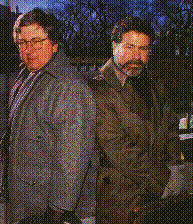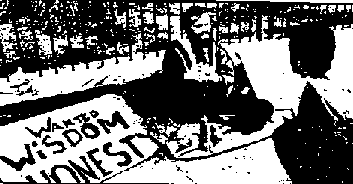Question: Did
Mr. Robbins lie to the Washingtonian when he claimed to make
a living as a "liaison with protesters," or did the U.S. Attorney
mislead the court?
Vigil Continued .. Mr. Robbins as Prosecutorial Assistant
Reopen Pennsylvania Avenue | Peace Park
Proposition One | Current Events

